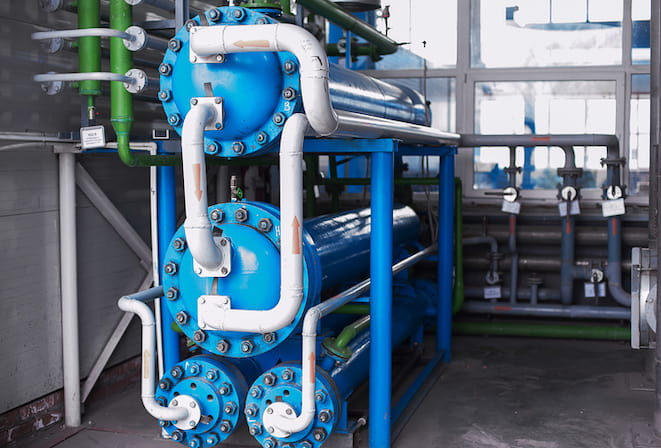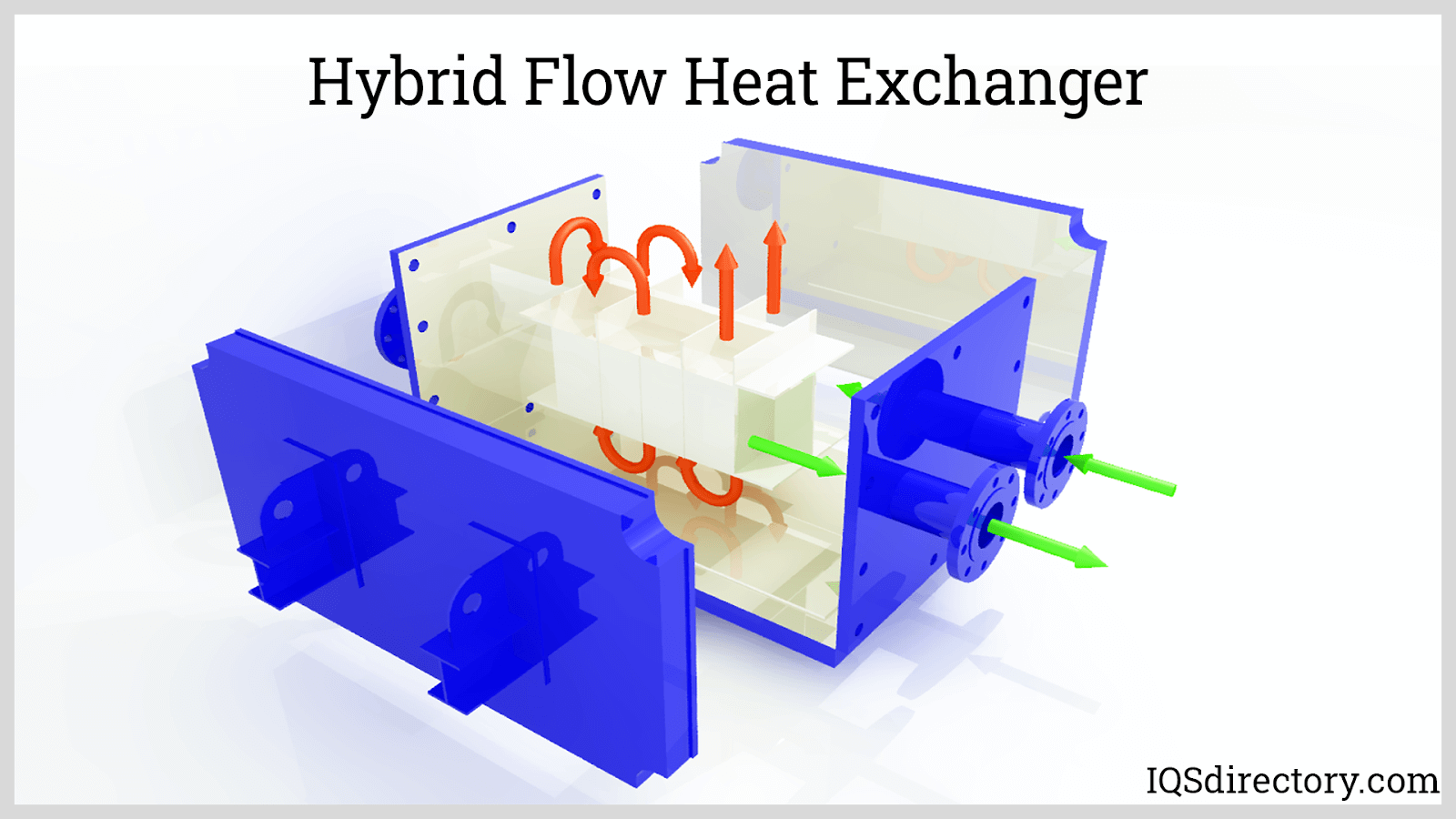DVS Heat Transfer Systems: A Step-by-Step Guide to Smarter IoT Integration
Wiki Article
Innovations in Heat Transfer Equipments: What You Need to Know for Ideal Performance
Technologies in Heat transfer systems are transforming efficiency across numerous markets. Advanced materials like graphene and nanofluids guarantee substantial enhancements in thermal conductivity. The combination of IoT and equipment learning uses opportunities for real-time tracking and boosted power efficiency. Nevertheless, the landscape of thermal administration is swiftly developing (DVS Heat Transfer Systems). Recognizing these developments is necessary for attaining ideal system efficiency and sustainability in the future. What certain developments are forming this makeover?Arising Products for Improved Heat Transfer

Advanced Heat Exchanger Layouts
While standard Heat exchangers have served their objective in various applications, advanced layouts are currently arising to meet the enhancing demands for effectiveness and efficiency. These ingenious styles, such as plate, shell-and-tube, and finned-tube Heat exchangers, integrate boosted surface and improved flow patterns to increase thermal transfer prices. In enhancement, portable layouts allow for lowered space requirements without endangering efficiency. Advanced materials, such as composites and corrosion-resistant alloys, furthermore improve longevity and performance under severe conditions. Simulation technologies and computational liquid dynamics are significantly utilized to improve these designs, guaranteeing peak Heat transfer attributes. As industries seek to decrease power usage and make best use of outcome, the adoption of innovative Heat exchanger designs is essential in accomplishing these purposes.The Role of Nanotechnology in Heat Transfer
Nanotechnology plays a vital role in boosting thermal conductivity within Heat transfer systems. By adjusting products at the nanoscale, scientists have achieved considerable enhancements in energy effectiveness. These improvements not only optimize efficiency yet additionally add to even more lasting power remedies.Improved Thermal Conductivity
Considerable advancements in thermal conductivity have emerged through the application of nanotechnology, revolutionizing Heat transfer systems across different sectors. By integrating nanoparticles into Heat transfer liquids and materials, scientists have actually attained impressive increases in thermal conductivity. These nanoparticles, such as carbon nanotubes, graphene, and metal oxides, improve the Heat transfer residential or commercial properties as a result of their high surface and unique thermal features. The resulting composites exhibit boosted efficiency in applications varying from electronics cooling systems to sustainable energy innovations. The capacity to customize the dimension, form, and structure of nanoparticles allows for enhanced thermal administration solutions. As a result, nanotechnology remains to play a pivotal role in the advancement of extra effective and effective Heat transfer systems, leading the way for improved commercial applications.
Power Effectiveness Improvements

Combination of IoT in Heat Transfer Systems
The integration of IoT in Heat transfer systems Home Page introduces the execution of wise sensors that enhance functional effectiveness. These sensors enable real-time information surveillance, permitting instant changes and optimizations. This technological advancement has the potential to substantially improve performance and power administration in Heat transfer applications.Smart Sensors Execution
As Heat transfer systems progress, the integration of clever sensors with the Web of Things (IoT) has become a transformative strategy. These sensors enable real-time tracking of pressure, flow, and temperature level rates, boosting system effectiveness and reliability. By gathering and sending information, they facilitate positive upkeep, decreasing the threat of system failings. In addition, smart sensing units add to power savings by refining operational specifications based upon environmental problems. Their capacity to evaluate abnormalities and patterns enables informed decision-making, making sure peak performance of Heat transfer systems. As markets significantly embrace this modern technology, the implementation of smart sensing units stands to transform just how Heat transfer systems are taken care of, paving the means for greater sustainability and boosted performance end results.Real-Time Information Tracking
How can real-time data keeping an eye on improve the efficiency of Heat transfer systems? By integrating Internet of Things (IoT) modern technology, Heat transfer systems can leverage continuous information collection from smart sensors. This real-time tracking permits prompt evaluation of flow, pressure, and temperature prices, making it possible for drivers to determine ineffectiveness promptly. Modifications can be made to maximize efficiency, minimize power intake, and extend devices lifespan. Additionally, predictive upkeep can be applied, decreasing unexpected downtime and pricey repair services. The capacity to visualize performance metrics with dashboards boosts decision-making, fostering an aggressive approach to system management. Ultimately, real-time information checking not only boosts operational efficiency but additionally contributes to sustainability objectives within commercial processes.Power Efficiency and Sustainability Trends
Power performance and sustainability trends are improving the landscape of Heat transfer systems, driving advancement and compliance throughout numerous markets. Organizations are progressively focusing on energy-efficient designs to minimize operational expenses and decrease environmental effects. The integration of renewable resource sources is coming to be more prevalent, allowing Heat transfer systems to operate sustainably while fulfilling regulative demands. In addition, advancements in products and modern technologies promote lower power consumption and enhance general performance. Lifecycle evaluations are likewise obtaining traction, permitting firms to examine the ecological impact of Heat transfer systems from production to disposal. This concentrate on sustainability not just supports corporate obligation however also positions organizations competitively in a market where consumers increasingly prefer green services. Energy effectiveness and sustainability stay crucial considerations for future developments in Heat transfer modern technology.Advancements in Thermal Management Solutions
While the need for reliable Heat transfer continues to climb, developments in thermal monitoring options are emerging to resolve both performance and sustainability challenges. Advanced materials, such as stage adjustment materials and nanofluids, are being created to improve Heat transfer efficiency - DVS Heat Transfer Systems. These products boost thermal conductivity and enable better temperature level guideline in numerous applications. Furthermore, technologies like energetic thermal control systems are getting traction, allowing real-time modifications to Read Full Article manage Heat flow successfully. These systems add to energy financial savings and lower the ecological impact of thermal procedures. The integration of IoT in thermal monitoring helps with surveillance and predictive maintenance, making certain enhanced efficiency and durability of Heat transfer systems. On the whole, these innovations stand for substantial strides towards more lasting thermal monitoring methodsFuture Instructions in Heat Transfer Technology
Emerging advancements in thermal administration solutions indicate a promising future for Heat transfer modern technology. Researchers are navigate to this website increasingly concentrating on establishing products with remarkable thermal conductivity and enhanced energy effectiveness. Technologies such as nanofluids, which consist of put on hold nanoparticles, offer considerable renovations in Heat transfer performance. Furthermore, the assimilation of wise products that adjust to differing temperature conditions is getting grip, permitting for more effective and receptive systems. The rise of additive manufacturing methods is likewise allowing the layout of intricate Heat exchanger geometries that maximize liquid flow. Additionally, the execution of artificial intelligence formulas is prepared for to reinvent the optimization of Heat transfer systems, promoting anticipating maintenance and performance improvement. Collectively, these advancements are poised to change the landscape of Heat transfer innovations in different sectors.
Regularly Asked Inquiries

Exactly how Do I Select the Right Heat Transfer System for My Application?
Selecting the appropriate Heat transfer system entails examining application needs, including temperature arrays, fluid residential or commercial properties, and effectiveness needs. Assessing system types, maintenance considerations, and cost-effectiveness likewise plays a necessary role in making an informed decision.What Are the Upkeep Demands for Advanced Heat Exchangers?
Upkeep needs for innovative Heat exchangers usually consist of routine examinations, checking for leaks, cleaning of surface areas, and assuring ideal flow rates. Complying with supplier guidelines assurances effective procedure and lengthens the tools's life expectancy.
Exactly How Do Environmental Variables Influence Heat Transfer Effectiveness?
Environmental factors significantly influence Heat transfer efficiency. Variations in moisture, air flow, and temperature effect thermal conductivity and convective Heat transfer, inevitably influencing system performance and necessitating consideration throughout the design and operation of Heat transfer systems.What Safety Standards Relate To Heat Transfer Systems?
Safety and security standards for Heat transfer systems usually include standards from organizations such as ASME and ASTM. DVS Heat Transfer Systems. These standards address products, design, and functional practices to assure dependability, efficiency, and security versus dangers in various applications
Exactly How Can I Troubleshoot Common Heat Transfer System Issues?
Fixing common Heat transfer system issues includes looking for leakages, ensuring correct fluid circulation, inspecting insulation integrity, and confirming temperature level differentials. Determining these variables can help maintain system efficiency and prevent additional difficulties.Nanotechnology plays an important function in improving thermal conductivity within Heat transfer systems. Considerable innovations in thermal conductivity have actually arised through the application of nanotechnology, transforming Heat transfer systems throughout numerous industries. Developments in thermal conductivity with nanotechnology have paved the method for impressive renovations in power performance within Heat transfer systems. Power efficiency and sustainability trends are reshaping the landscape of Heat transfer systems, driving technology and compliance across various markets. The integration of IoT in thermal administration helps with tracking and anticipating maintenance, making sure maximized efficiency and long life of Heat transfer systems.
Report this wiki page